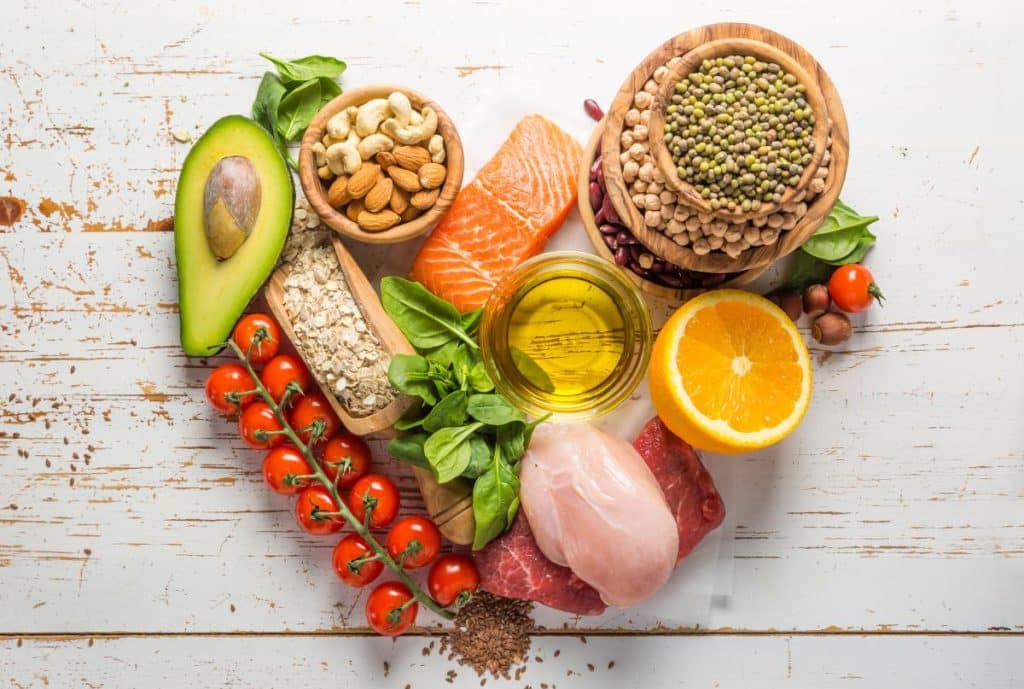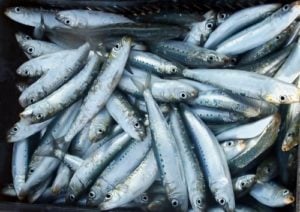
Essential for health and growth, essential minerals perform many vital bodily functions. Among these are the formation of bones and teeth, regulation of body fluids, and participation in the life processes of cells, including many chemical reactions.
The essential minerals are divided into two groups:
- Macrominerals, needed in amounts of 100 mg to one gram, include calcium, phosphorus, magnesium, sodium, potassium, chloride, and sulfur; and
- Trace minerals, needed in far smaller amounts, include iron, zinc, iodine, copper, manganese, fluoride, chromium, molybdenum, and selenium. Very small amounts of these trace minerals are necessary for health and growth. If taken in large amounts, most can become deadly poisons.
Experts tell us that the same minerals essential to good health can be harmful in excess. Too much of one mineral may interfere with the function of other minerals or may even be poisonous. Excess minerals pose a health risk for children, pregnant or breastfeeding women, older adults, or people on poor diets or with some disease.
Animal foods are generally the best sources of minerals because they tend to contain minerals in the proportions humans need. Unlike vitamins, minerals are not damaged by heat or light, but some can be lost in excess cooking water. Mineral supplements are seldom needed except for iron. Many infants need supplemental iron, about 10 percent of early adolescents and about 20 percent of women in the childbearing years. Taking iron if you do not have a proven iron deficiency is unwise since it can produce iron overload that can damage the liver, pancreas, and heart.
Calcium for healthy bones and teeth
This essential mineral is the primary building material of bones and teeth. The skeleton holds about 98 percent of the body’s calcium, and the teeth one percent. The remaining one percent is used throughout the body to regulate muscles (especially the heart), blood clotting, nourishing cells, releasing energy, and transmitting nerve impulses. All these bodily functions call for calcium. For this reason, calcium can be considered one of the most essential minerals.
The skeleton – often considered a solid, static structure – is living tissue made up of protein and minerals. There is a continuous exchange of materials between the bones and the rest of the body – an exchange controlled by hormones. The amount of the mineral held in storage and the amount drawn on for bodily functions depends on your needs and the balance among the calcium and other nutrients in your body.

The greatest need for calcium exists during childhood and adolescence and, for women, during pregnancy and breastfeeding. Infants and children require two or four times more calcium than adults per kilogram of body weight.
The Recommended Dietary Allowance (RDA) for calcium for an adult is 800 mg; 1,200 mg is the recommended intake for adolescents and 1,600 mg for pregnant teenagers. The amounts of calcium encompass the entire range of needs of essentially all members of these groups.
Calcium deficiency can bring about the same bone problems as those caused by a lack of vitamin D. Older adults may develop osteoporosis – brittle, porous bones – from a prolonged shortage of calcium, protein, and vitamins A and C, the group of nutrients involved in maintaining the basic bone structure. For calcium to be properly assimilated, vitamin D must be present. In addition, a shortage of calcium can produce nervousness, cramps, and muscle spasms. However, these symptoms frequently have nothing to do with calcium deficiency.
Calcium is transported from the skeleton to maintain various body processes. Prolonged ‘borrowing’ of calcium from the bones, without replacement of losses, may cause demineralization of the bones. Exercise retards demineralization and helps keep the skeleton appropriately dense.
Milk and milk products are the best sources of calcium. Small fish such as sardines, eaten with bones, green vegetables (except for spinach), citrus fruits, dried peas and beans, and sesame seeds supply good amounts of calcium.
Calcium summary –
Main roles: Formation of bones and teeth; blood clotting; transmission of nerve impulses.
Deficiency symptoms: Stunted growth; rickets; osteoporosis; convulsions.
Good sources: Milk; cheese; dark-green vegetables; sardines; mussels; oysters.
Phosphorus repairs cells and tissues
All body cells contain phosphorus, with 85 percent found in the bones and teeth. This essential mineral’s main function is in forming bones and teeth. It also plays a vital role in how the body uses carbohydrates and fats and is needed to make protein for the growth, maintenance, and repair of cells and tissues. Phosphorus also helps the body make ATP, a molecule the body uses to store energy.

The adult RDA for phosphorus is set at 800 mg to equal calcium intake. This amount is intended to limit phosphorus intake to calcium levels and prevent shortages. A widely unbalanced level of calcium and phosphorus can have the same effect on the human body as a calcium deficiency and can eventually lead to bone demineralization.
It is not generally known that phosphorus is added to processed foods, hams for water retention, and cola drinks. Although the body tolerates some calcium/phosphorus imbalance, high phosphorus levels, such as those associated with excessively high protein diets, should be avoided. People with kidney disease can have trouble removing phosphorus from their blood and may need to limit their intake.
Since most foods contain phosphorus, deficiencies are unlikely to occur in people with normal diets. Meat, poultry, fish, eggs, whole grains, legumes, milk, and cheese are good sources of this mineral.
Phosphorus summary –
Main roles: Formation of bones and teeth; acid-base balance.
Deficiency symptoms: Weakness; bone demineralization; calcium loss.
Good sources: Milk; cheese; meat; fish; poultry; grains; legumes; nuts.
Magnesium prevents muscle cramps
About 60 percent of the magnesium in your body is found in bone, while the rest is in muscles, soft tissues, and fluids, including blood. This essential mineral is needed for bone structure, nerve and muscle activity, the release of energy, regulation of body temperature, fat metabolism, and protein synthesis.
Most adults need about 300 to 350 mg of magnesium each day. Nearly all foods contain this mineral, so meeting the RDA presents few problems. However, some alcoholics and post-surgical patients may develop a magnesium deficiency. Prolonged diarrhea, protein-energy malnutrition, diuretics, and laxatives may also cause magnesium deficiency eventually. Some magnesium in fresh foods can be lost during various forms of processing.
Good sources of magnesium, such as whole grains, nuts, beans, leafy vegetables, and milk, should be eaten and drank as part of a diet that is adequate in all other nutrients. More magnesium is found in hard water than in soft, and magnesium deficiency is possible in areas supplied with soft water.
Do you need magnesium? Signs include muscle cramps in the legs or feet, muscle twitches, aching muscles, migraine headaches, dental pain, brain ‘fogging’, anxiety or irritability, and restless legs.
Magnesium summary –
Main roles: Activation of enzymes; protein synthesis.
Deficiency symptoms: Failure to grow; behavioral disturbances; spams.
Good sources: Whole-grain cereals; green leafy vegetables; nuts; meat; milk; legumes; drinking water.
Sodium, potassium, chloride
Sodium, potassium, and chloride are the regulators of body fluids. For each cell to produce energy or rebuild its structure, it must obtain needed nutrients from the fluids surrounding it. Concentrations of sodium, potassium, and chloride control the exchange across the cell membrane. Sodium is involved in regulating water balance, in muscle contractions and in nerve reactions. Potassium aids in these functions as well as in protein synthesis and the formation of glucose. Chloride combines with the other two, or with water, to form hydrochloric acid in the stomach for digestion.
Shortages of sodium, potassium, or chloride are unlikely under normal conditions. Potassium depletion can occur under similar circumstances as magnesium depletion. There is no RDA for these three minerals. Amounts of sodium in diets are often much higher than we need, and in some people, associated with high blood pressure.

Sodium is found in table salt, salted foods, and most protein foods. Potassium is contained in various amounts in almost all foods, especially fruits such as bananas, oranges or dates, cooked dry beans, pumpkin, and meats. Chloride is supplied almost entirely by sodium chloride.
Sodium summary –
Main roles: Acid-base balance; body-water balance; nerve function.
Deficiency symptoms: Muscle cramps; mental apathy; reduced appetite.
Good sources: Most foods except fruit.
Potassium summary –
Main roles: Acid-base balance; body-water balance; nerve function.
Deficiency symptoms: Muscle weakness; paralysis.
Good sources: Meat; milk; many fruits; cereals; legumes; vegetables.
Chloride summary –
Main roles: Gastric juice formation; acid-base balance.
Deficiency symptoms: Muscle cramps; mental apathy; reduced appetite.
Good sources: Table salt; seafood; milk; meat; eggs.
Sulfur for healthy hair and nails
Sulfur is found in all body tissues. It is important in the formation of cartilage, hair, and nails. Major sources of sulfur are three of the amino acids that make up protein. We also get small amounts from pantothenic acid, thiamin, and biotin. There is no RDA for this mineral. If your diet has adequate animal protein, there will be no sulfur deficiency since it is easily obtained from such foods. The sulfur content of vegetable protein varies.
Sulfur summary –
Main roles: Component of active tissue compound and cartilage.
Deficiency symptoms: Related to deficiency of sulfur amino acids.
Good sources: Protein foods.
Trace minerals
There are several trace minerals now considered essential to human health.
Iron is needed to form the compounds that use and transport oxygen in the body. Part of hemoglobin, the oxygen-carrying part of the red blood cell, iron is also a component of certain enzymes used in energy metabolism.

The RDA for iron for most children and males is 10 milligrams. Male adolescents and women of childbearing age need 18 mg of iron daily, which may be difficult to obtain in certain countries. To meet the increased need for iron during pregnancy, 30 – 60 mg of supplementary iron is recommended daily.
Iron deficiency anemia is a prevalent nutritional deficiency. In common with anemias caused by other factors, its symptoms are fatigue, shortness of breath, headaches, and paleness. True iron deficiency should be diagnosed by a doctor through a blood test. You may wind up with iron overload diseases if you take iron supplements for anemia that is not traceable to iron deficiency.
The high rate of iron deficiency is caused in part by the body’s ability to absorb only an average of about 10 percent of the iron we consume. Also to blame is the trend away from good dietary sources of iron such as meat, fish, and poultry, from which 20 percent of iron can be absorbed, toward vegetarian diets. Only two to five percent of iron from plant foods can be absorbed. When we eat a balanced diet of animal and plant foods, animal foods increase the absorbability of iron in plant foods. Thus, we wind up with an average of about 10 percent of the iron absorbed from a balanced meal.
Iron summary –
Main roles: Component of hemoglobin and enzymes involved in energy metabolism.
Deficiency symptoms: Iron-deficiency anemia (weakness, shortness of breath).
Good sources: Liver; lean meats; legumes; whole grains; dark-green vegetables; eggs; dark molasses; shrimps; oysters.
Zinc is used as part of many enzymes in the body. Zinc is important for growth, good appetite, and digestion. The average adult requirement for zinc is 15 mg, which most people can obtain through diet. Slight zinc deficiencies can be caused by low soil levels of this mineral, which means that zinc is not passed along on the food chain. Symptoms may include decreased sense of taste and slower healing of wounds. Severe zinc deficiencies, however, can stop growth.
Most animal protein foods such as fish, meat, egg yolk and milk, are good sources of zinc. Supplements are not generally recommended except as medical treatment for long-term illnesses, since excessive intake may aggravate marginal copper deficiency. If you feel that you need a supplement, do not take more than 100 percent of the RDA (a good rule for any self-administered vitamin or mineral supplement).
Zinc summary –
Main roles: Component of enzymes involved in digestion.
Deficiency symptoms: Growth failure; lack of sexual maturation; loss of appetite; abnormal glucose tolerance.
Good sources: Milk; liver; shellfish; pilchards; wheat bran.
Iodine is found in the hormones produced by the thyroid gland. These hormones control the body’s basal metabolism, which is critical to a normal growth rate from conception to adulthood. A lack of iodine leads to goiter, an enlargement of the thyroid gland in the neck, and generally slow metabolism. Deficiencies before or soon after birth can cause cretinism, which retards physical and mental development.
The adult RDA for iodine is 150 micrograms. The RDA is higher for pregnant and breastfeeding women. Using iodized table salt in the home can completely prevent iodine deficiency. However, many people may get several times the iodine they need from several unexpected sources. Dairy products, for example, have been found to contain anything from 25 to 250 micrograms of iodine per cup.
How does the iodine get there? To prevent goiter in cattle, some farmers provide their herds with iodine salt licks; some of this iodine is subsequently passed on in the food supply. Another source is iodophors, iodine-containing chemicals used widely by farmers and the food-processing industry to disinfect equipment; again, some of the iodine enters the food chain. Finally, of course, seafood is a direct, rich source of iodine. Excessive intakes of iodine can lead to goiter by interfering with the work of the thyroid gland.
In some countries, attempts are being made to limit the many unexpected sources of iodine in the food system – such as iodophors in the dairy industry, alginates, coloring dyes, and dough conditioners – and replace them, wherever possible, with compounds containing less or no iodine.
Iodine summary –
Main roles: Component of thyroid hormones.
Deficiency symptoms: Decreased metabolic rate (hypothyroidism).
Good sources: Fish and shellfish; dairy products; vegetables; iodized salt.
Other trace minerals
Copper is needed for respiratory enzymes and the development of red blood cells. Deficiency can cause problems in the blood and blood vessels, skeletal defects, and hair color and texture changes. However, these are highly unlikely in persons who eat a varied diet. Particularly good dietary sources of copper are offal, shellfish, nuts, cocoa, and dry legumes.
Manganese is needed for normal bone structure, reproduction, and growth. Deficiencies have never been reported among people eating balanced diets, and excesses can be dangerous. Among the good natural sources of manganese are various nuts, whole grains, vegetables, and fruits.
Fluoride is vital to the formation and strength of teeth and bones. Fluoridated water is the best source of this mineral, which is also found in canned fish and tea. In those areas where natural fluoride levels in the water are low, fluoridation is recommended by public health authorities.
Chromium is an aid to normal glucose metabolism and is usually in adequate supply in a balanced diet. The estimated safe and adequate daily dietary intake for adults is from 0,05 to 0,2 mg. The upper level of 0,2 mg should not be habitually exceeded because toxic levels for many trace elements may be only several times the usual intakes. Good sources of available chromium are brewer’s yeast, meat products, cheeses, whole grains, and condiments. Vegetables are a poor source of chromium.
Molybdenum works in the body to break down proteins and other substances. Molybdenum is stored in the body, particularly in the liver, kidneys, glands, and bones. It is also found in the lungs, spleen, skin, and muscles. Good sources dietary sources of molybdenum are legumes, including beans, peas and lentils, green leafy vegetables, grains, nuts, and liver. Molybdenum deficiency is very uncommon.
Selenium is a trace mineral found naturally in the soil that also appears in certain high-selenium foods, and there are even small amounts in water. Selenium increases immunity, takes part in antioxidant activity that defends against free radical damage and inflammation, and plays a key role in maintaining a healthy metabolism. Good sources include Brazil nuts, sunflower seeds, sardines, poultry, eggs, and spinach.
.

